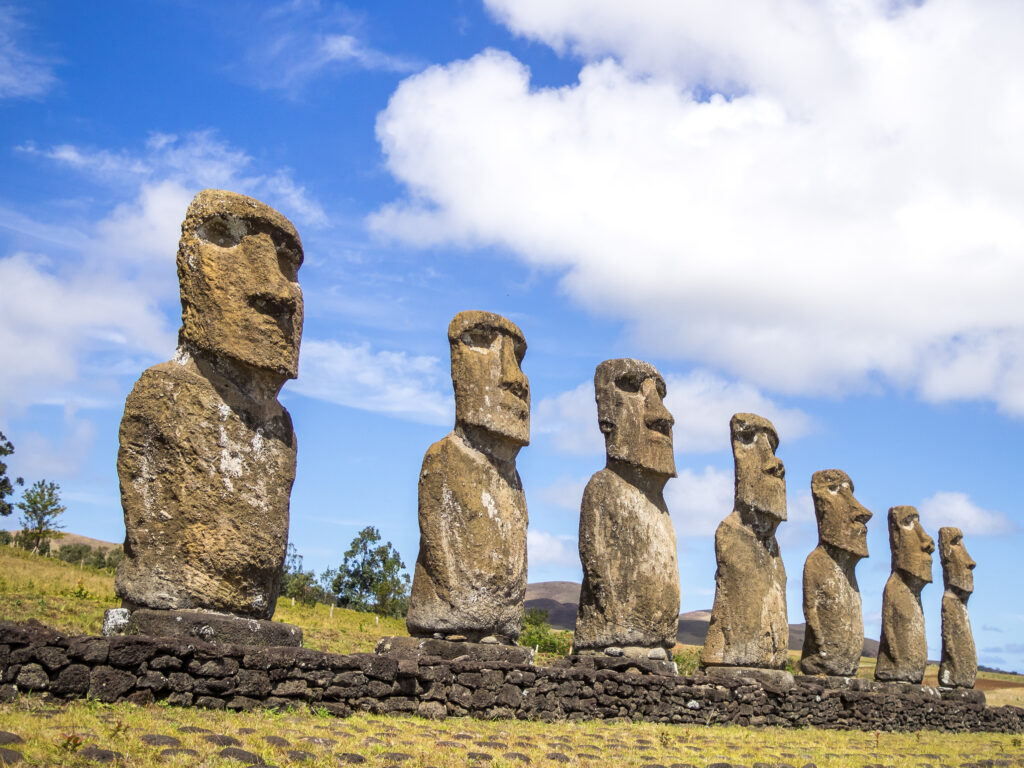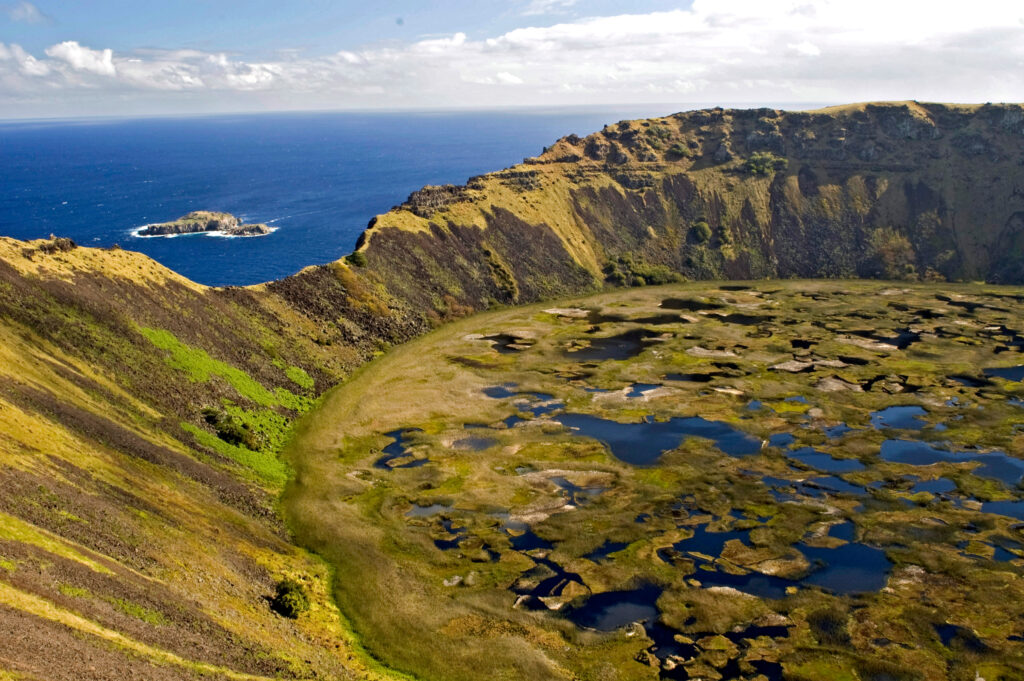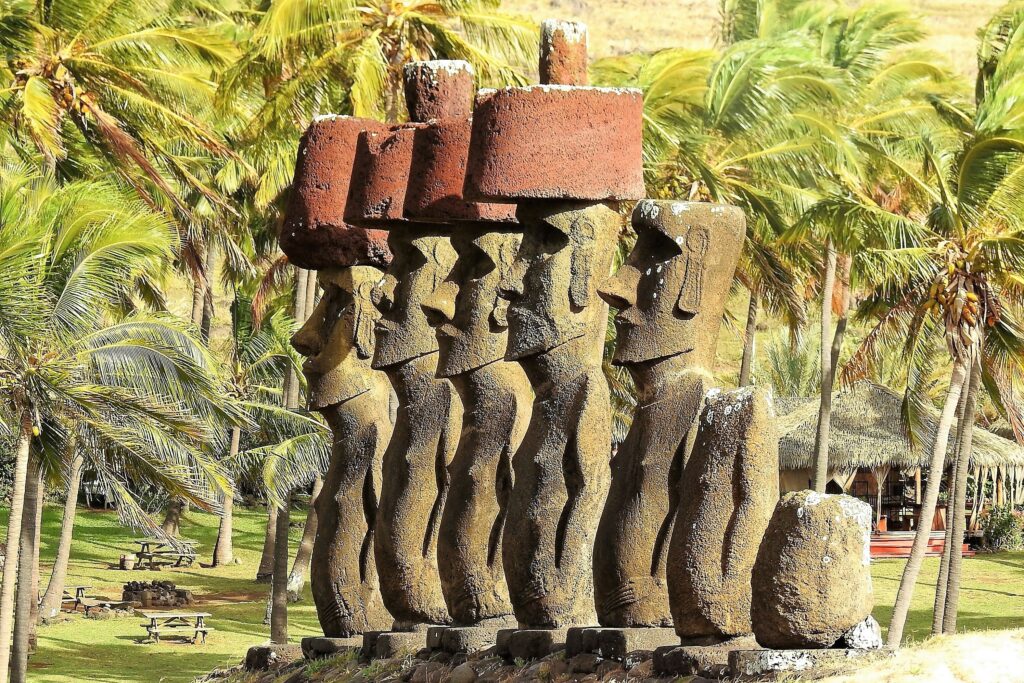
Rapa Nui, more commonly known as Easter Island, is a remote volcanic island in the south-eastern Pacific Ocean, made famous to the world due to it’s monumental statues caled Moai. These statues are seen in the hundreds across the island, and were carved by Polynesian settlers between the 10th and 16th centuries. (UNESCO World Heritage Centre)
Almost all moai have been sculpted from the volcanic rock at Rano Raraku, where hundereds of incomplete and abandoned Moai statues still remain.(Easter Island Travel.) Many of these Moai were transported and erected onto stone ahu platforms, which served as focal points for ancestral worship (UNESCO World Heritage Centre.)
The island was first recorded by Dutch explorer Jacob Roggeven in 1722. By this point, many moi already lay toppled, showing that the island may have already been victim to societal collapse, and/or invasion (National Geographi.). Statue construction appears to have ended around the 17th Century, which coincides with massive deforestation and ecological collapse on the island at this time (Smart History).


Moai were believed to embody mana (spiritual authority) of deified ancenstors, allowing the spirit to watch over their clans from the ahu perches (British Museum). Many figures once wore red‑scoria pukao topknots and had coral‑and‑obsidian eyes, giving them vivid presence during rituals ( EISP – Easter Island Statue Project )
Rapa Nui is more than just an island filled with stone giants, it’s a testament to humanities ingenuity, spirituality and the balance between society and environment.

- Temperature
- Precipitation
- Rain Chance
- Wind
- Humidity
- Pressure
In 2018, Göbekli Tepe was officially added to the list of UNESCO World Heritage Sites, recognized as one of the earliest known examples of monumental architecture and religious life (UNESCO, 2018).